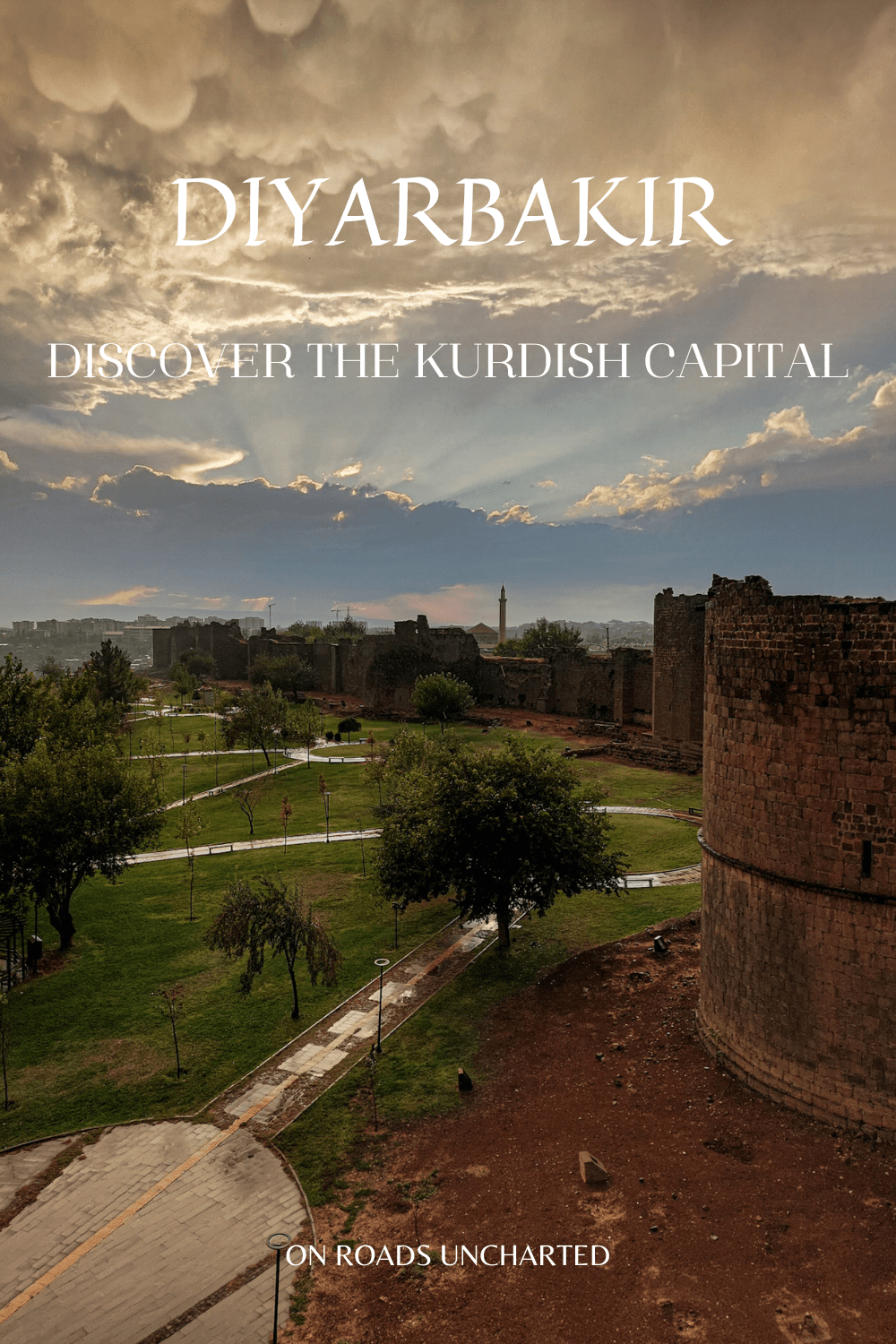Diyarbakır is the beating heart of Kurdistan, the cultural capital of the Kurds, a city brimming with ancient traditions and a turbulent history. Boasting the second longest continuous walls in the world, the fifth holiest site in Islam, and the largest Armenian church in the Middle East, the city is littered with magnificent landmarks.
Besides her architectural beauty, it is the Kurdish hospitality that sets Diyarbakır apart, however.
The fruit seller gifting you that luscious mandarin on his daily commute. The shopkeeper sharing his tea repeatedly until the kettle runs dry. The curiosity of the old shepherd grazing his flock, and the unbridled joy of the children running through her crooked alleys.
You might come for her weathered stones but you will stay for the warmth of her people.
Nevertheless, to fill your rambling days, here are eight wonderful things to do while visiting this amazing Kurdish travel destination.

A SHORT HISTORY OF DIYARBAKIR
Tracing her roots back to the 6th millennium BCE, Diyarbakır is first mentioned as Amida during the times of the Assyrian kings (nowadays, the Kurdish name is still Amed). Although perfectly positioned at the verdant banks of the Tigris river, the city remained relatively insignificant until Roman legions seized her at the end of the 2nd century CE and elevated her to become one of the empire’s most vital border towns in Mesopotamia.
In 349 CE, to bolster her defences against Sassanian attacks, emperor Constantius II ordered the construction of a monumental fortification. Her imposing walls proved insufficient, however, and merely a decade later Persian king Shapur II rode his gallant steed through her bloodied streets. For the following three centuries, Diyarbakır stayed highly contested between Sassanids and Romans, until the Arabs swept across the Middle East in the 7th century and, in their wake, Islam strode through her broken gates, heralding a new era.
In the ensuing centuries, Diyarbakır was ruled by the who is who of Islamic realms (e.g., Umayyads, Abbasids, Artuqids, Seljuks, Safavids, among others), before falling to Ottoman troops in 1514. Under Osman’s heirs, the city retained her military importance yet flourished in the crafts, as well, her glass and metal works achieving distinct renown throughout the empire.
Beginning in the 19th century, a growing Kurdish identity led to increased tensions with the Sublime Porte and calls for independence intensified. The disintegration of the Ottoman Empire amplified these aspirations further and Diyarbakır became the unofficial capital of the Kurds and centre of resistance. The simmering conflict reached its temporary culmination in 2015/16 during the Siege of Sur, when Turkish forces bombarded the old town, destroying nearly 80% of the historic centre.
Since then, large parts of ancient Diyarbakır have been razed to the ground and redeveloped by the Turkish government, erasing a majority of the city’s age-old identity.

TAKE A WANDER THROUGH THE OLD TOWN
Step away from the main street, and you will find a very different Diyarbakır. Within a brief moment the city’s noise will vanish, so will the people, and before long you will find yourself wandering the backstreets of Diyarbakır’s Sur district in solitude.
Along narrow alleys where the sun barely reaches. Through dim underpasses, looming. Across cobbled squares, hidden away in a beautiful maze of slanted facades and hanging wires.
You will spot a black cat sneaking across the concrete. Maybe a seller navigating his blue cart full of fresh mandarins and pomegranates through this urban jungle. Joyous children, their faces lit up with happiness, feeding corn to a flock of excited pigeons. You will pass the locals, greeting you with a smile.
Despite their rough appearance there is an odd peacefulness about these streets.
Diyarbakır’s old quarter might not be glamorous or elegant. But it is certainly real.
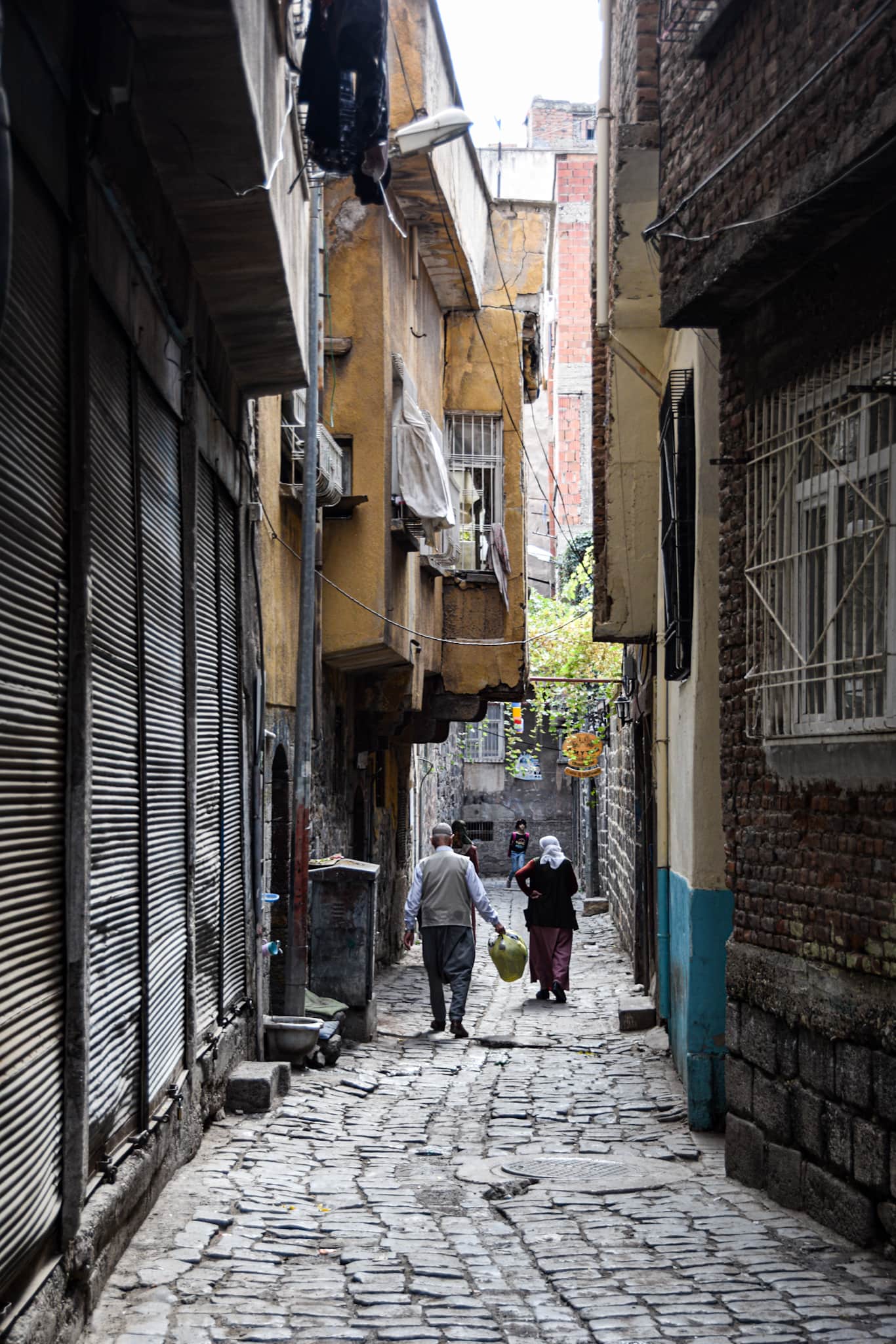


MARVEL AT THE GREAT MOSQUE OF DIYARBAKIR
In 639 CE, Caliph Umar, in celebration of his grand victory at the gates of Diyarbakır, ordered the first Anatolian mosque to be constructed on the ruins of a former Christian temple. However, neglect and indifference by the local populace saw the mosque fall into disrepair soon after.
It wasn’t until 1092, shortly after the Seljuk Turks captured the city, that Sultan Malik Shah commanded her past-due reconstruction. Built from black basalt, the Muslim sanctuary was heavily modelled after the Umayyad Great Mosque in Damascus in hopes to import her prestige and cultural legacy into Anatolia. Even though, the Great Mosque of Diyarbakır does resemble her Syrian sister in many ways (especially in layout and proportions), her austere appearance and certain structural features, such as the absence of a dome, heavily distinguish the two temples.
Nevertheless, the Great Mosque of Diyarbakır is not without architectonic prowess. Especially the porticoes, enclosing the main courtyard, are a feast for the eyes and boast incredibly intricate masonry art, a stark contrast to the plainness of the remaining building. Interestingly, the columns feature Corinthian style capitals that might have been retrieved from a Roman amphitheatre.
Today, some scholars consider the Great Mosque of Diyarbakır to be the fifth holiest site in Islam, right after the Great Mosque in Damascus.
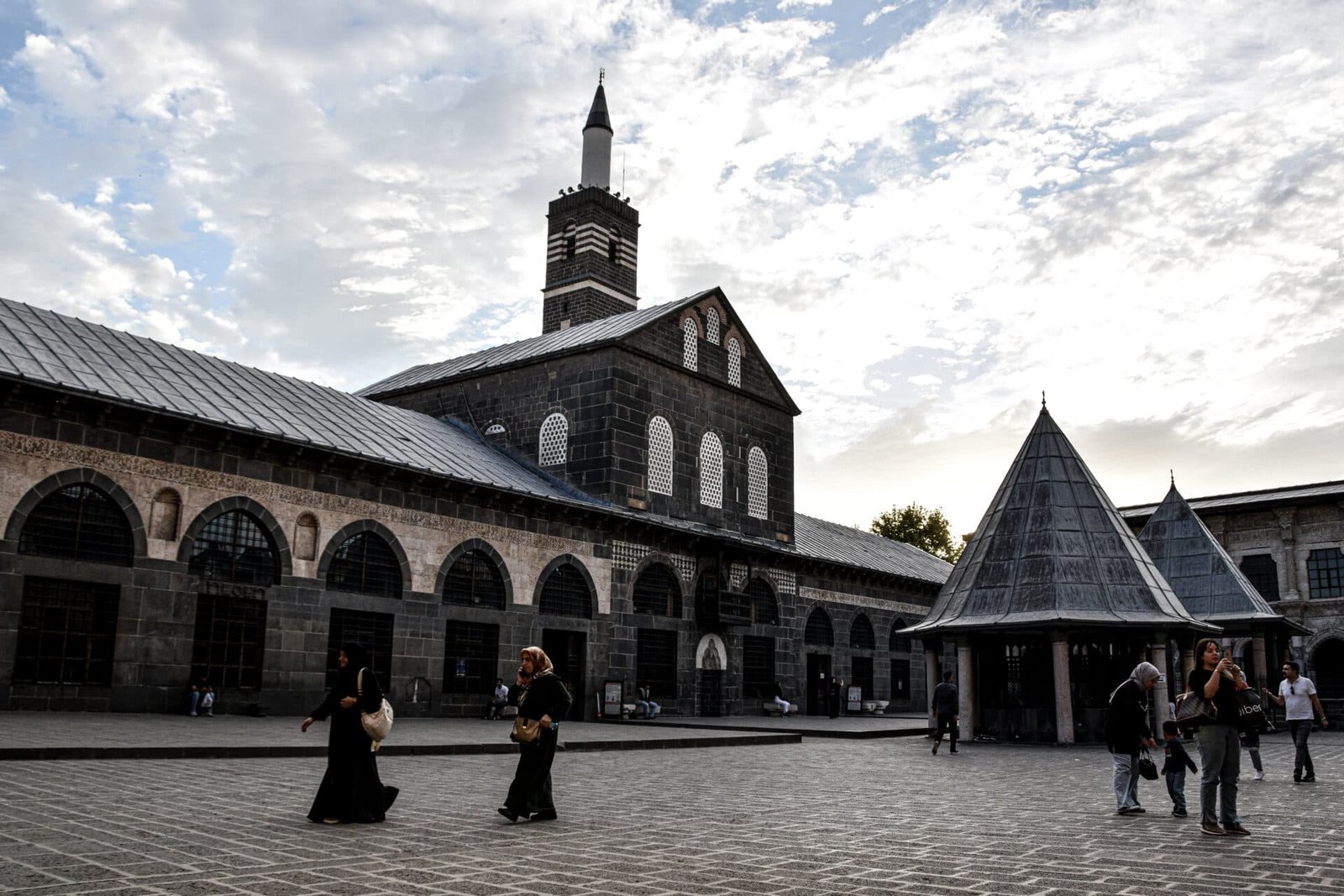


SLOW DOWN IN A HAN
Once you pass the threshold of a Turkish han, the rhythm changes.
The hustle and bustle of the streets gradually fades, and tranquillity returns to the scene. Fuelled by infinite quantities of black tea, conversations are conducted, minds spoken, and jokes cracked, yet the difference in pace is palpable.
Beneath hanging awnings, lounged on a comfortable couch, life moves slower.
Whether you are going there for an afternoon çay or to indulge in the sweet taste of Assyrian wine come nightfall, decelerating and sojourning in a han might be one of the most Turkish experiences you can possibly have.
Where | Seek out Hasan Paşa Hanı for a well-earned tea break but head to Sülüklü Han for the clanking chime of wine glasses!

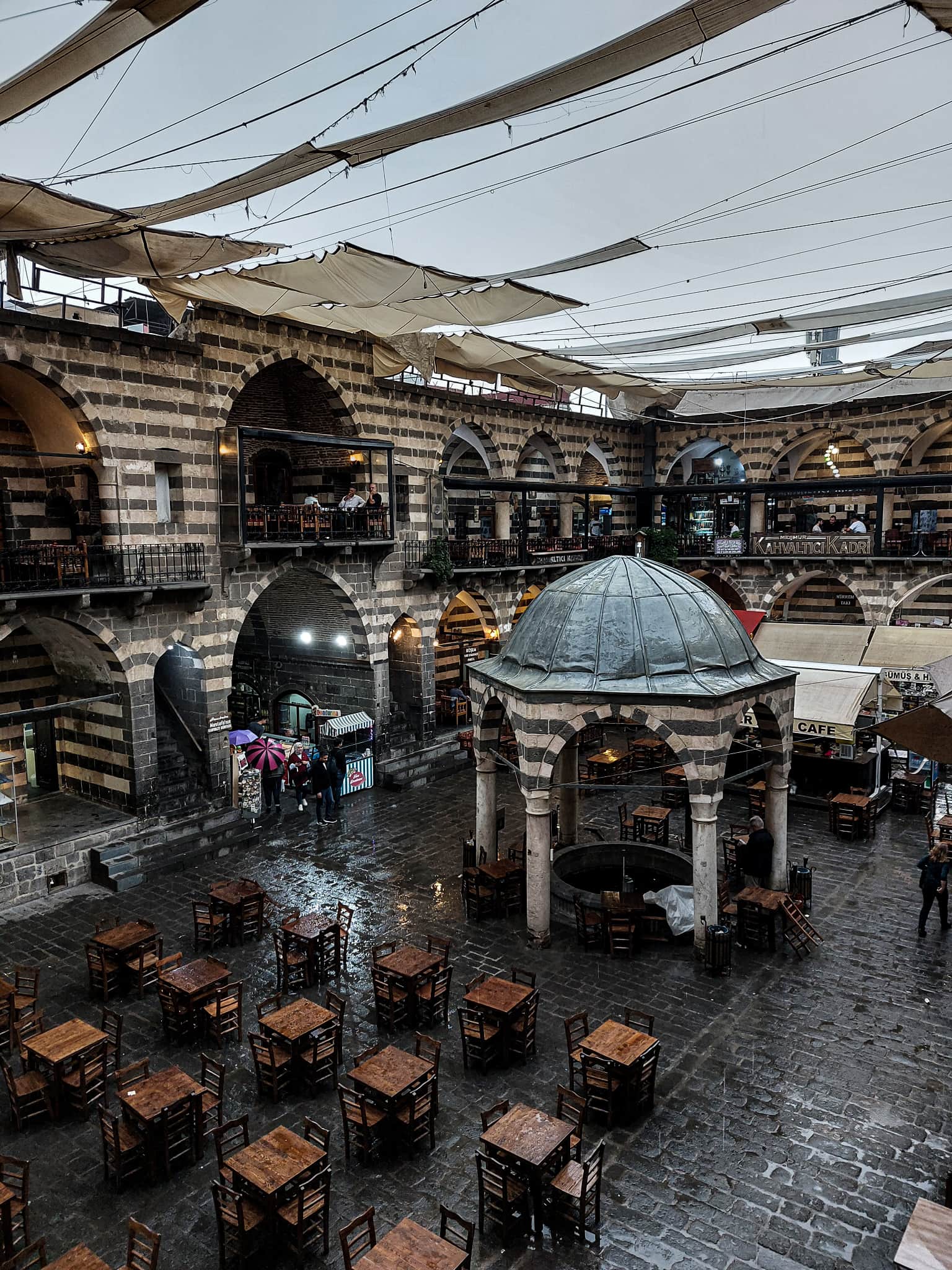
LEARN ABOUT DIYARBAKIR'S HISTORY
Situated in the north-eastern corner of the old town, for thousands of years, Iç Kale (“the citadel”) had been the political and administrative centre of Diyarbakır. Since the foundation of the first settlement, Amida Höyük, in the 6th millennium BCE, it was on these slopes that the city’s countless rulers resided and exerted their power.
Like the outer ramparts, the original fortifications were most likely erected by the Hurrians (3rd-2nd millennium BCE) before they obtained their citadel form during Roman times, while the present appearance is attributed to extensive renovation works undertaken by Sultan Süleyman the Magnificent in the 16th century CE.
Nowadays, the castle is open to the public and features a triumvirate of museums (Atatürk Museum, Archaeological Museum, and Diyarbakır Museum), as well as the remains of St. George Church. You may also visit Hazreti Süleyman Mosque containing the tomb of Süleyman, son of legendary Arab commander Khalid ibn al-Walid (7th century CE).
Opening hours | Summer 8:30-18:30 | Winter 8:30-16:30 | closed on Monday
Entrance fee | 20 TL (October 2022)
The ticket gives access to the museum complex and St. George Church. Hazreti Süleyman Mosque (like all mosques in Turkey) is free of charge.
WALK ALONG THE RAMPARTS
Stark and enduring, the dark basalt walls shielding Diyarbakır’s old town might be the city’s most iconic feature. Boasting an impressive height of around 11 metres and a width of 3-5 metres, the walls are in fact the longest and widest continuous walls in the world, only second to the Great Wall of China!
First erected in 297 CE, the fortifications saw major expansions under Emperor Constantius II at the end of the 4th century but have remained relatively unchanged ever since. The most significant reconstructions occurred in the wake of the Ottoman conquest in 1514, when parts of the ramparts were levelled by artillery fire. The walls were damaged once more in 2015/16 during the Siege of Sur (as part of the Turkish-Kurdish conflict) but have since been mended and added to the UNESCO World Heritage list.
In close vicinity to Mardin Gate (in the south), the walls are open to the public and can be accessed by scaling a number of steep staircases, offering stunning views of the verdant Hevsel Gardens and lush banks of the Tigris River on one side, as well as sprawling Diyarbakır on the other.
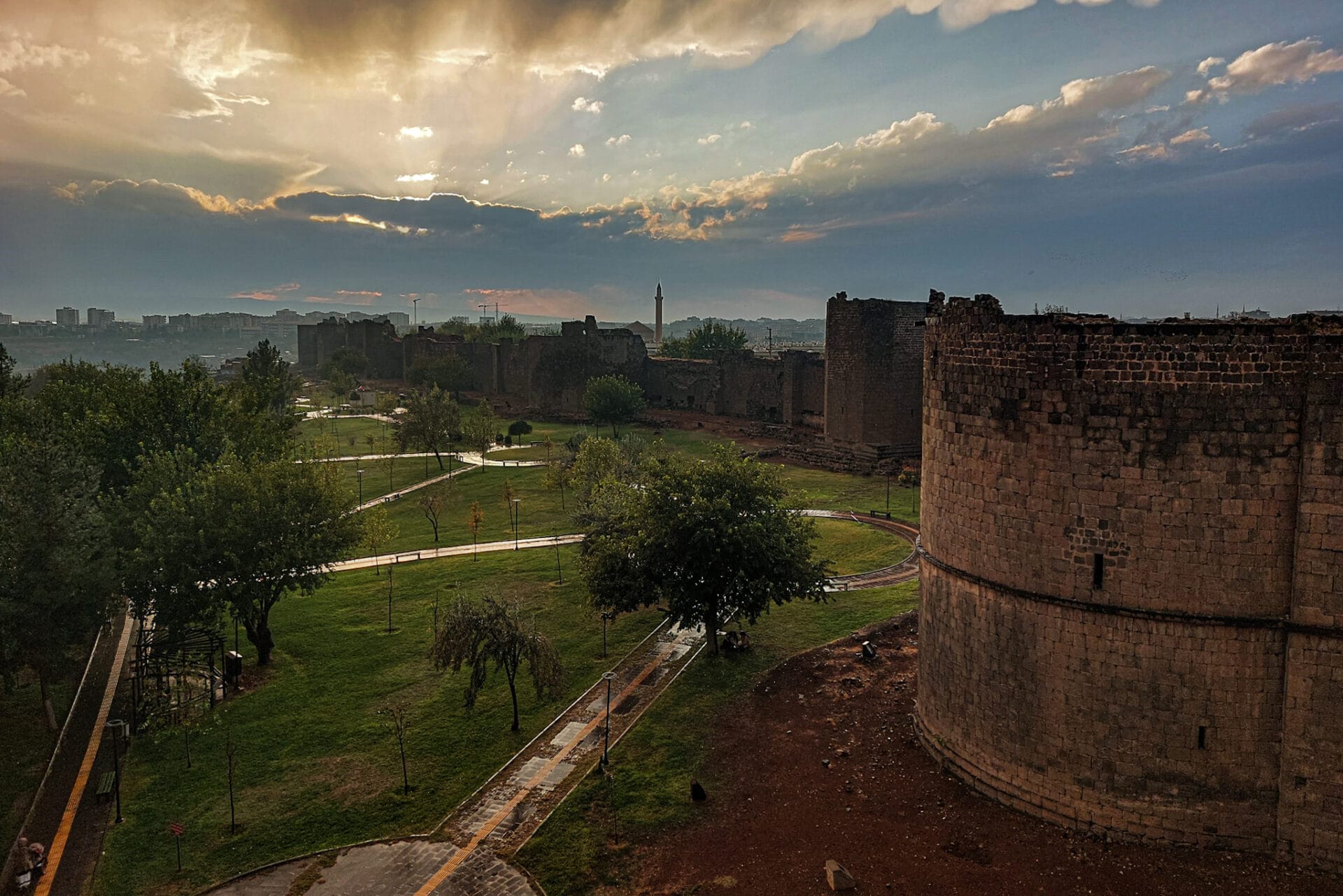
UNWIND AT THE BANKS OF THE TIGRIS
Beyond the reaches of Diyarbakır’s southern walls, lies the city’s most scenic landmark: Dicle Bridge (Pira Dehderî in Kurdish), colloquially known as “Ten Arches Bridge”.
Commissioned in 1065 CE during the reign of the Kurdish Marwanid dynasty (990-1085 CE), her impressive arches, totalling a length of 178 metres, span the mystic Tigris and are believed to constitute the very first Islamic Bridge in Anatolia.
Charming cafés line the verdant riverbanks and offer mesmerising views of the towering bridge and mighty stream, travelling southwards. When the last rays of a setting sun clad the land golden, serenity reigns, and both bridge and river show their most beautiful face.
How to get there | You can easily reach the bridge by foot. Once you leave Diyarbakır through Mardin Gate, simply follow the road running along the river. You will arrive at the bridge after about 2,5 kilometres.
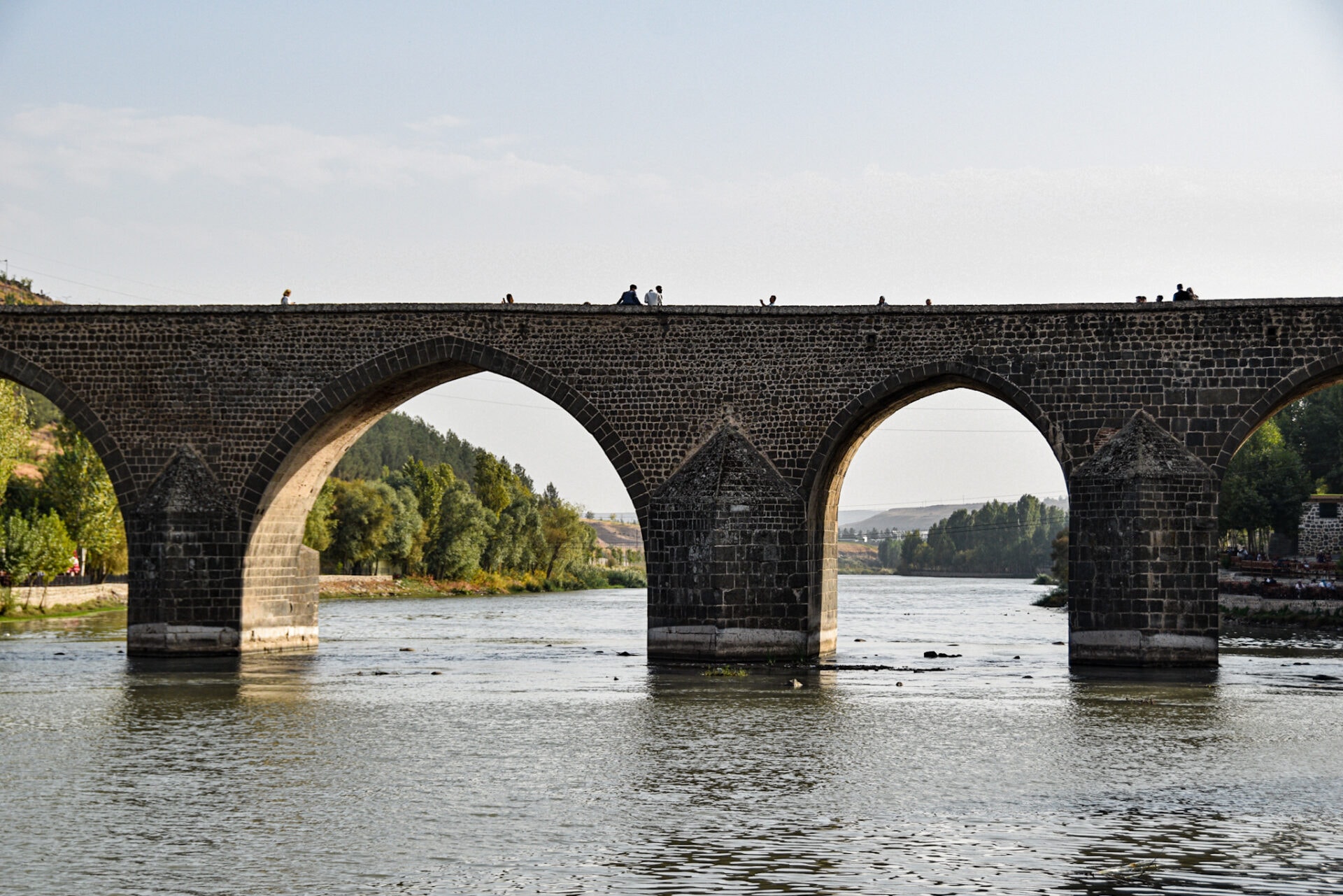
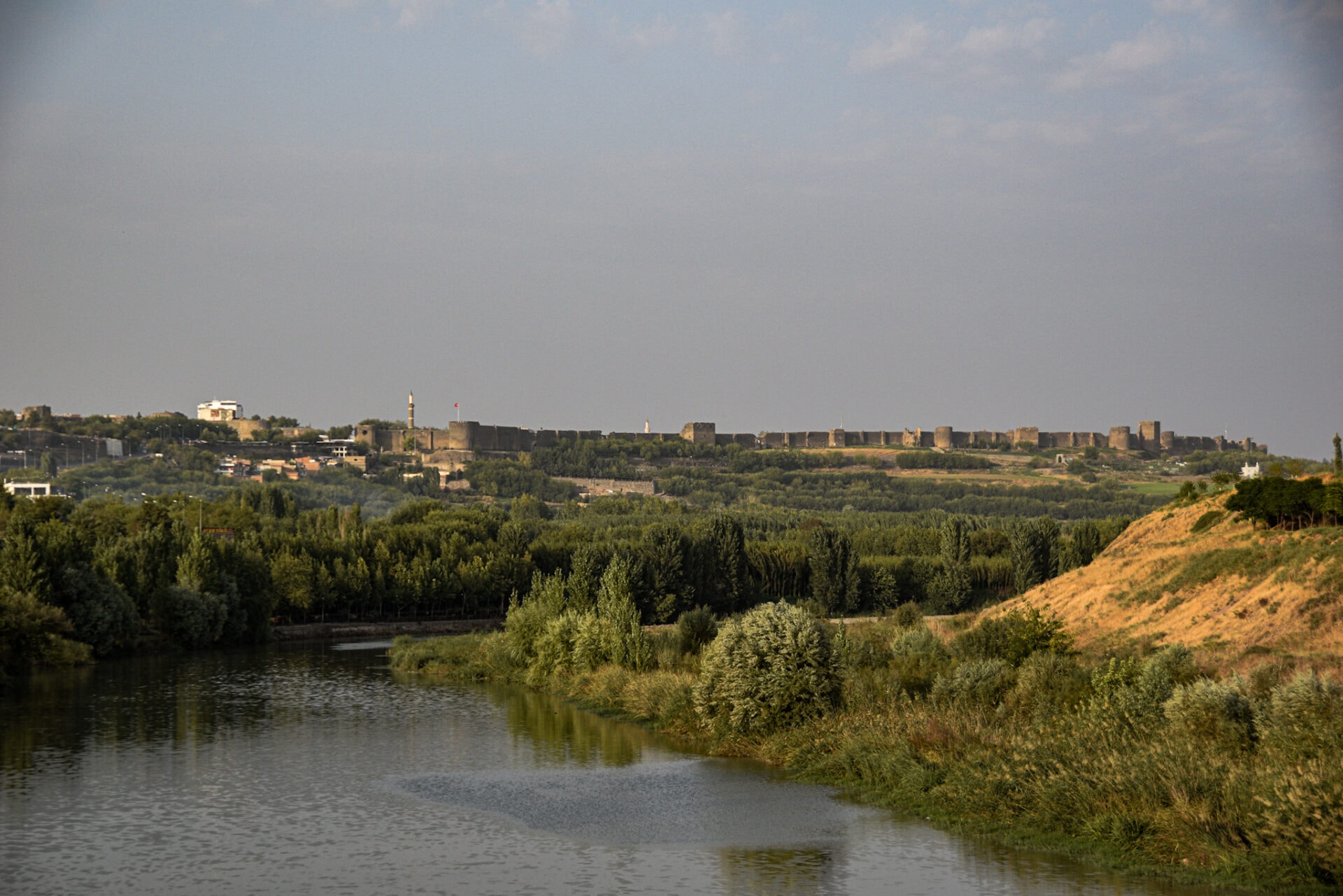
SEARCH FOR DIYARBAKIR'S CHRISTIAN PAST
When Christianity started to spread across the Middle East in the 1st century CE, Diyarbakır’s Assyrian population was quick to adopt the virgin faith, and soon after this community became the driving force behind the city’s spiritual and cultural development.
Countless churches and monasteries were erected in honour of God and the city became known as “Amid”, meaning “salvation” in Syriac. Even though the Assyrians have been (for the most part) brutally ousted from these lands, a few Christian temples may still be found in the maze of Diyarbakır’s old town.
Built in the 3rd century CE, the Orthodox Church of Virgin Mary is one of the oldest and historically most important churches that remain in the city, while St. Giragos Cathedral, albeit significantly younger (built in 1515-18 CE), proudly stands as the largest Armenian church in the Middle East today.
Church of Virgin Mary
Opening hours | Summer 10:00-17:00 | Winter 10:00-16:00 | every day
Entrance fee | 10 TL (October 2022)
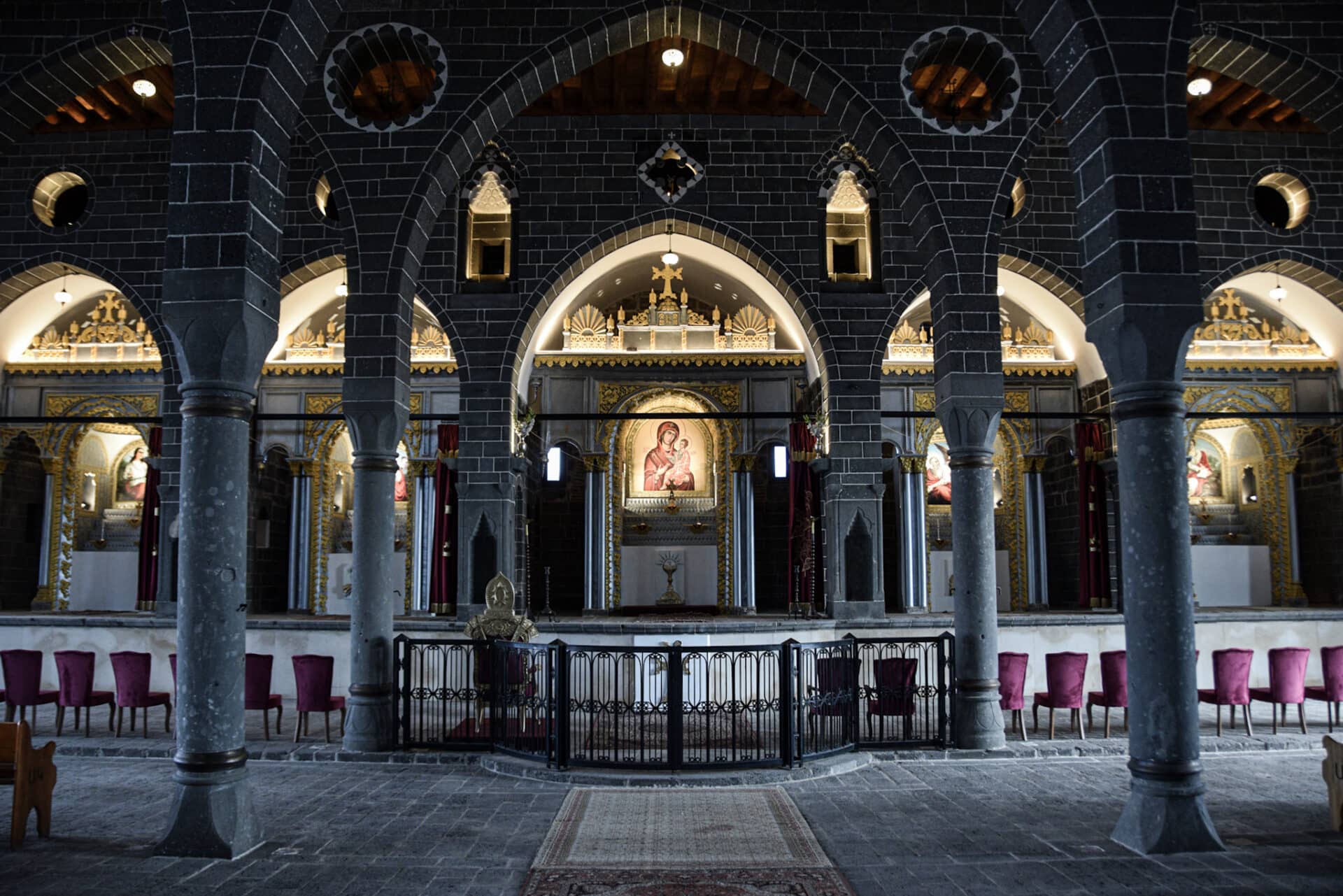
DISCOVER THE CITY'S MANY MOSQUES
Following nearly six hundred years of Christian domination, in the wake of the Arab conquests (7th century CE) Islam arrived in Diyarbakır. Superseding the old faith, Islam not only changed the religious landscape of the region but the architectonic layout of the city, as well.
Minarets started to replace steeples, and the call of the muezzin soon drowned out bell chimes.
Throughout her turbulent history Diyarbakır was ruled by countless Muslim states, from the Umayyads to the Abbasids and the Seljuks to the Ottomans, and today the old town is dotted with places of worship spanning all eras of Islamic history.
Mosques worth a visit include Ali Paşa Mosque, known for her unique octagonal dome, Behram Paşa Mosque, boasting a magnificent interior, Parli Safa Mosque, famed for her ornamented minaret and colourful tilework, as well as Şeyh Mutuhhar Mosque with her intriguing “belltower” minaret.
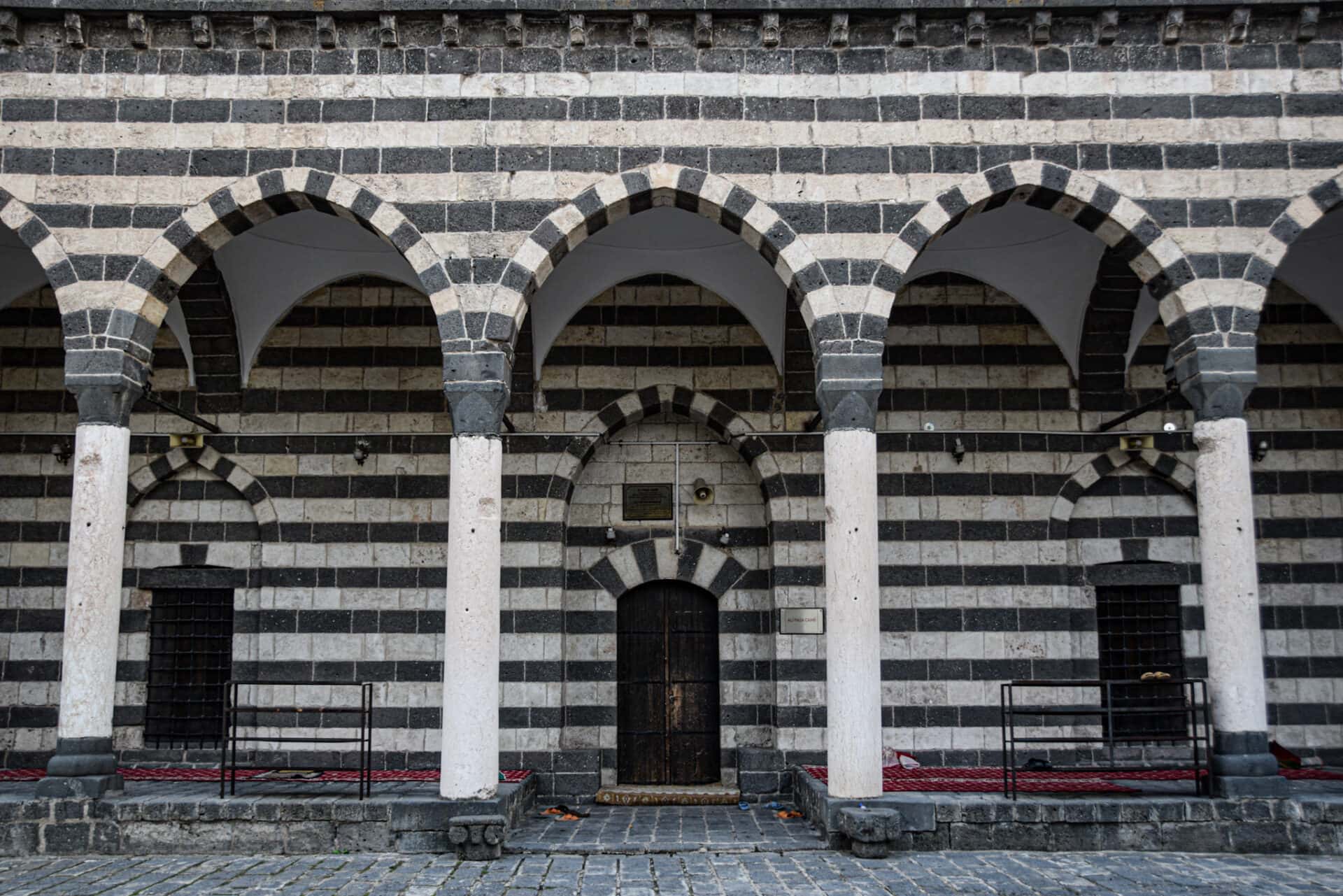
WHERE TO NEXT?
For more content consider following me on Instagram.
Fascinated by Anatolia? You might enjoy these uncharted places, as well:
WHAT TO SEE IN AND AROUND SANLIURFA
THE BEST THINGS TO DO IN GAZIANTEP | TURKEY’S CULINARY CAPITAL
